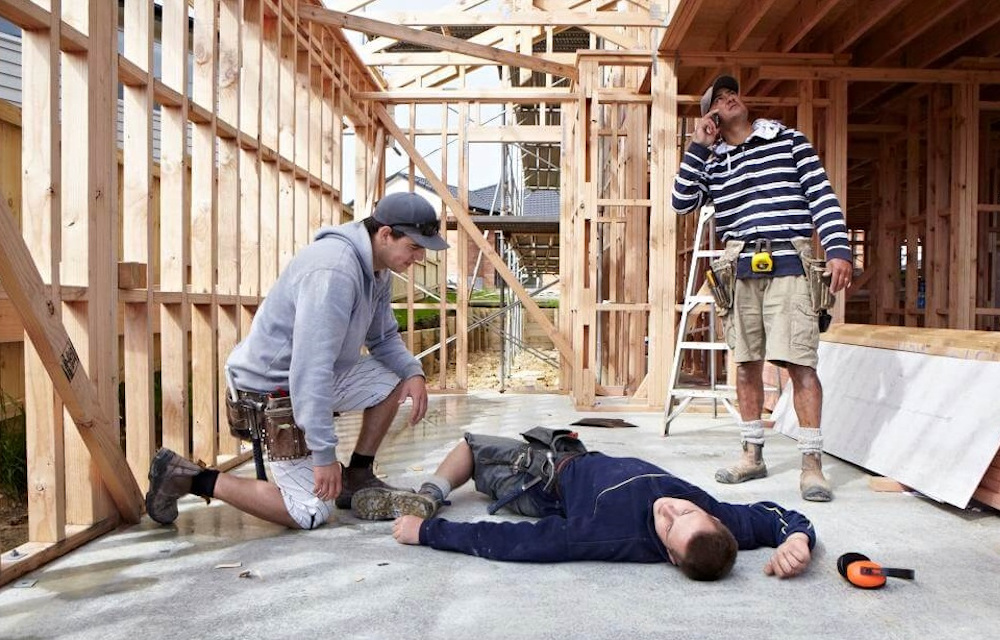Roofing is a high-risk trade, with numerous hazards that can lead to insurance claims. Roofers face unique challenges, from working at heights to dealing with hazardous materials. Here are some of the most common liability insurance claims from roofers, with examples.
1. Property Damage
Property damage is one of the most frequent claims. For instance, while repairing a roof in Auckland, a roofer accidentally dropped a heavy tool, shattering a client’s skylight. In another case, during a roof replacement in Wellington, a ladder fell and dented a homeowner’s car parked in the driveway. Such incidents can result in significant repair costs. Liability insurance covers these damages, ensuring that the roofing company doesn’t have to bear the full financial burden.
2. Physical Injury
Falls are a leading cause of injury in the roofing profession. In Christchurch, a roofer slipped and fell off a ladder, breaking his leg. While ACC covers the lost income, it doesn’t full cover it. Plus, there is the risk of a WorkSafe prosecution, fines, legal bills and reparations.
3. Water Damage
Improper installation can lead to water leaks, causing significant damage. In a Dunedin project, a roofer failed to properly seal a section of the roof, leading to leaks during a heavy rainstorm. The water damage extended to the ceiling, walls, and floors, requiring extensive repairs. In another case in Tauranga, an incorrectly installed gutter caused water to overflow, damaging the home’s foundation. These claims can be substantial, as they often involve structural repairs and mould remediation.
It is important to note that public liability insurance in New Zealand broadly excludes claims arising from external water penetration from events such as the examples above. For more on this check out: Be Aware of the Building Defects Exclusion.
4. Defective Workmanship
Claims for defective workmanship are another common issue. In Napier, a customer filed a claim because the new roofing tiles were not installed correctly, causing them to come loose during a windstorm. The roofer had to replace the entire roof at their own expense. Similarly, in New Plymouth, a client discovered that the materials used for their roof did not meet the promised quality, leading to premature deterioration.
Liability insurance can help cover the costs of redoing the work and any associated legal fees. Be aware that different insurers take different approaches to cover for defective workmanship. For more on this check out: The Difference Between Defective Workmanship & Property Being Worked Upon Cover.
5. Fire Damage
Roofers working with materials such as hot tar or using welding equipment are at risk of causing accidental fires. For example, in Palmerston North a roofer using a blowtorch accidentally ignited the insulation in ceiling cavity. The resulting fire caused extensive damage to the property, leading to an expensive liability claim. Fire damage claims may also include the costs of fire department services and potential relocation expenses for the occupants. For more on this check out: The Dangers of Hot Work and How to Avoid Causing Damage
In a Nutshell
For roofers, liability insurance is crucial in mitigating the financial risks associated with their trade. The nature of roofing work makes it susceptible to various claims, from property damage to physical injury. By understanding these common claims, roofing contractors can better prepare and protect their businesses, ensuring they have the appropriate coverage to handle potential liabilities.
It’s important for roofers to understand what is and isn’t covered by their insurance. For example, the building defects exclusion is a big one. Additionally, roofers should actively consider what other risk mitigation measures they need to take to minimise the risk of accidental damage or other events. For example, appropriate training and equipment, workplace culture and quality control over workers and sub-contractors.

